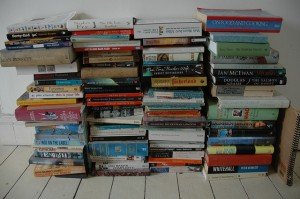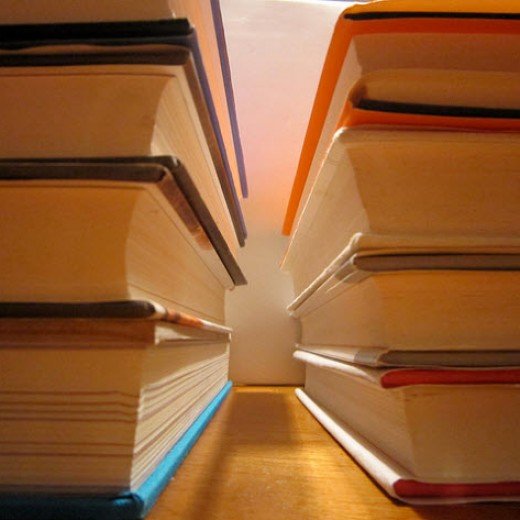The Imitation Game: The Sincerest Form of…. Becoming a Better Writer by Wyatt Bessing
 Welcome back to another one of Writer’s Fun Zone’s monthly columnists: Wyatt Bessing. A writing coach and teacher, author, Wyatt Bessing shares his fun take on games, play, and how they help our writing. Enjoy this month’s post on becoming a better writer by imitating other writers.
Welcome back to another one of Writer’s Fun Zone’s monthly columnists: Wyatt Bessing. A writing coach and teacher, author, Wyatt Bessing shares his fun take on games, play, and how they help our writing. Enjoy this month’s post on becoming a better writer by imitating other writers.
***
This month, I present you with an exercise in close reading, in which you’ll study an author’s style and emulate it to practice your technique. Great pianists don’t begin by composing their own arrangements, do they? Likewise perhaps, writers learn by internalizing the rhythms and tones of those writers whom they admire before writing their own fiction.
Equipment Needed:
A Favorite Book
Your Work-in-Progress (novel, short story, or article)
First, open to a random page in your favorite book.
-
Let your finger travel down the page and come to rest.
-
Now, copy down the first complex sentence you see. I know this will be difficult for many new writers, as we’ve all been lectured endlessly on the evils of plagiarism. Don’t worry, this is just an exercise; no one else will see what you’ve written.
-
From the new John Irving book In One Person, I find:
“It was Elaine’s turn to blush, but Kitteredge, who was in complete control of the moment, had fixed his most earnest gaze on my mother.”
Next, you are going to analyze your passage and record four pieces of information: Wants, Action, Description, and Voice:
-
Kitteredge wants amorous attention from the narrator’s mother.
-
Action: Fixing his gaze.
-
Description: Most earnest.
-
Voice: Observant and anxious.
Finally, you will write your own scene for your WIP, using the same form and voice as the passage you chose, but using your characters’ own wants, action, and description. Pay particular attention to the rhythm and structure of your mentor’s sentences.
In the Irving example, notice how the narrator’s attention drifts easily from character to character. The commas set off these waves of observation, and the sentence comes to rest suddenly on the relatively soft syllables of mother, who in this novel is seen as a soft and easily malleable character.
In my novel, 10 Dreams, I have an artist character trying to convince another to come out of hiding on a beach. In my imitation, I will use the same shifting focus technique, as my narrator worries about Kieran’s intentions:
Kieran wants Curtis to leave the beach.
Action: Building a statue.
Description: Dramatic pause, and a quick crack
Voice: Observant and anxious.
My revised sentence: Curtis’s heart raced as Kieran, drawing his attention to the scaffolding, had paused dramatically to gaze up at the wooden figure before suddenly nailing two long boards onto the arms and adjusting them with a vicious yank and screech, into a wry satire of Curtis’s Dream Man.
As a writer, I read widely and deeply, always seeking the eloquent phrase and the perfect details of characterization. It has been said that art is 10% genius and 90% perspiration.
For writers, that 90% often comes down to practice. I hope that this game awakens your analytical mind to read deeply, and that it sparks your creative mind to make that practice more enjoyable as you stretch your writing style to best capture those essential moments of character and action.
***
 Wyatt Bessing is a writer, writing coach, and learning specialist. His stories and essays have appeared in Bedtime-Story.com, Outsider Ink, national educational assessment materials, and in the anthology Dance, Human Rights, and Social Justice. Through his workshops, website, and blog at wyattgbessing.com, he guides new and experienced writers in crafting more effective, expressive, and striking work. During the day, he works at Star Academy in San Rafael, teaching reading and comprehension skills to students with learning differences in elementary through high school. He lives in Santa Rosa, CA with his wonderful fiance and co-creator, Sarah Laugtug.
Wyatt Bessing is a writer, writing coach, and learning specialist. His stories and essays have appeared in Bedtime-Story.com, Outsider Ink, national educational assessment materials, and in the anthology Dance, Human Rights, and Social Justice. Through his workshops, website, and blog at wyattgbessing.com, he guides new and experienced writers in crafting more effective, expressive, and striking work. During the day, he works at Star Academy in San Rafael, teaching reading and comprehension skills to students with learning differences in elementary through high school. He lives in Santa Rosa, CA with his wonderful fiance and co-creator, Sarah Laugtug.
***
Get the Writers Fun Zone Blog on Kindle 🙂 http://amzn.to/ZjQFCc







Wow! As an aspiring author, and with my first, complete, rough draft EVER, I can’t wait to try this in the morning. I’m working on revisions and edits and rewrites to really make the best of this novel, and this exercise seems like just the right tool to help me! Thank you for this post!